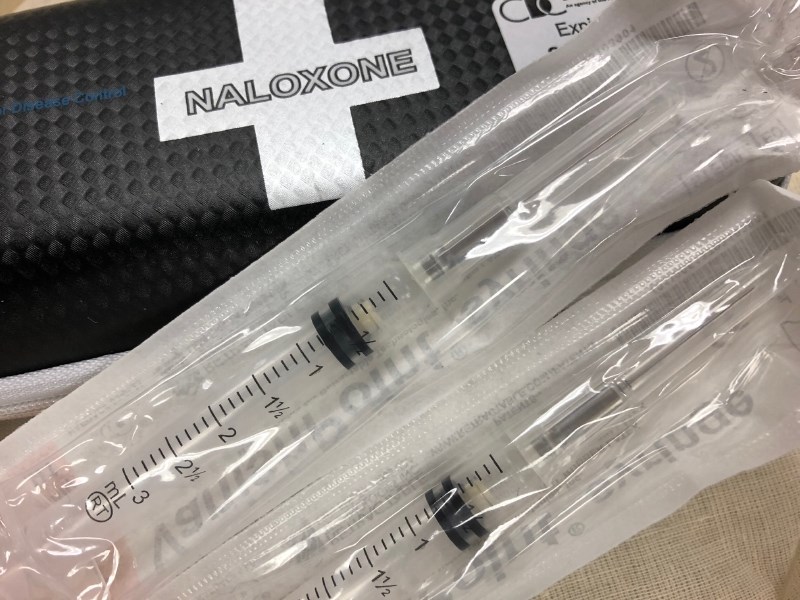Leaders in B.C.’s smaller communities say they don’t have the funding or infrastructure to deal with the province’s overdose crisis.
While overdose deaths have declined somewhat across the province, officials in affected smaller cities and rural areas say the human tragedy is straining their emergency services and dividing residents.
“I understand how the people in the big smoke of the Lower Mainland feel frustrated,” said Nanaimo Mayor Leonard Krog. “But I can’t emphasize enough, for the people outside the big smoke, this is not what they’re used to.”
In 2018, downtown Nanaimo was one of seven community health service areas with an overdose death rate higher than 100 per 100,000 people, according the B.C. Centre for Disease Control and the B.C. Coroners service. Last week, the Vancouver Island Health Authority issued a warning about a spike of overdose deaths in the city of 84,000 and in nearby Parksville.
The central island had 88 overdose deaths last year, according to the coroner’s service.
The number of deaths are low compared with bigger cities. Vancouver, for example, had 389 overdose fatalities last year, while Victoria had 99. But they create just as much impact.
“When you’re a smaller community, it’s more likely that each of those deaths touches someone in the community,” said Dr. Shannon Waters, an Island Health medical health officer.
Waters said rural communities often have fewer specialized staff, fewer resources and have to service a smaller and more diffuse population, making co-ordinating health resources difficult.
She said an overdose-prevention site in the Cowichan area gets about 100 users in a six-hour period each day.
“We’re uncovering a need we didn’t even know we had,” she said. “It just goes to show you each community is having its own experience.”
Vancouver Mayor Kennedy Stewart has called on the provincial and federal governments to decriminalize drugs and expand safe supply options as a way of reducing deaths and social costs of illicit drug use.
He said more support from provincial and federal governments is especially important for communities outside the Lower Mainland, where resources are limited. “I think the challenges being faced by communities with lesser populations is significant and I imagine overwhelming for many councillors, who are often hired to do their duties on a part-time basis,” he said. “This is where the province really needs to step in and lead.”
Dr. Geoff McKee, a medical health officer with Vancouver Coastal Health, said smaller communities pose challenges because of differences in density, availability of resources and core infrastructure. On a per capita basis, communities such as Powell River have overdose rates comparable to parts of Vancouver’s city centre, for example.
“There’s a lot of unique elements to these rural communities, which is why our response has to be different,” he said. “As we try to apply those new models to our rural communities, we often have to tweak them because they don’t quite work the same.”
For example, Dr. Sandra Allison, the chief medical health officer in northern B.C., said some communities she oversees have complicating factors such as the large number of transient people who came to Prince George during the 2017 wildfires.
Mayor Lyn Hall said Prince George’s location and concentration of health services make it a hub for supporting these populations.
In smaller communities, Allison said, social services and citizens often band together to form their own solutions and supports. But she also notes that stigma can drive people to use drugs alone, which makes them more susceptible to overdose and death.
Indigenous women are also disproportionately affected in northern B.C. “If you go to emergency because you’ve had an overdose, there’s a very real risk of a lack of confidentiality in that community because your personal health becomes coffee talk,” she said.
All health authorities say community action teams have helped them co-ordinate responses. They identify common themes, including a need for more affordable housing, more support from the province and a lack of resources and data.
In Nanaimo, Krog said rising homelessness is both a result and a consequence of the drug crisis.
Last year, a tent city that at one point was estimated to hold 300 people was dismantled, and 170 residents were moved into provincial modular housing. Krog said the last homeless count in the city found 335 people, but it’s estimated the real number is much higher. That’s a lot, he said, for a community of fewer than 100,000 people.
He said residents who write to him blame drug users for rising crime. Criminal incidents in Nanaimo rose more than 20 per cent from 2017 to 2018, according to Statistics Canada, and thefts under $5,000 have more than doubled since 2016.
He, Waters and Allison say this often creates friction among residents, distracting from finding solutions.
Krog said the overdose crisis “is creating divisions where none should exist. … It’s destroying sympathy, when in fact we need support more than ever.”
— With a file from the Times Colonist



